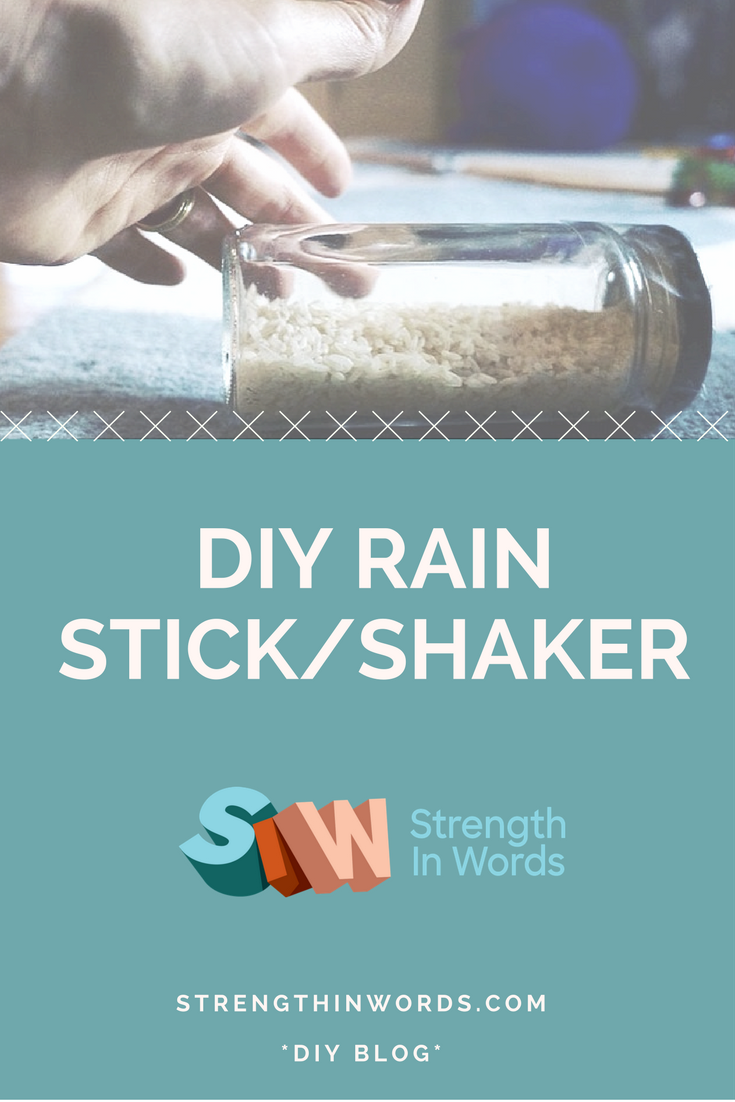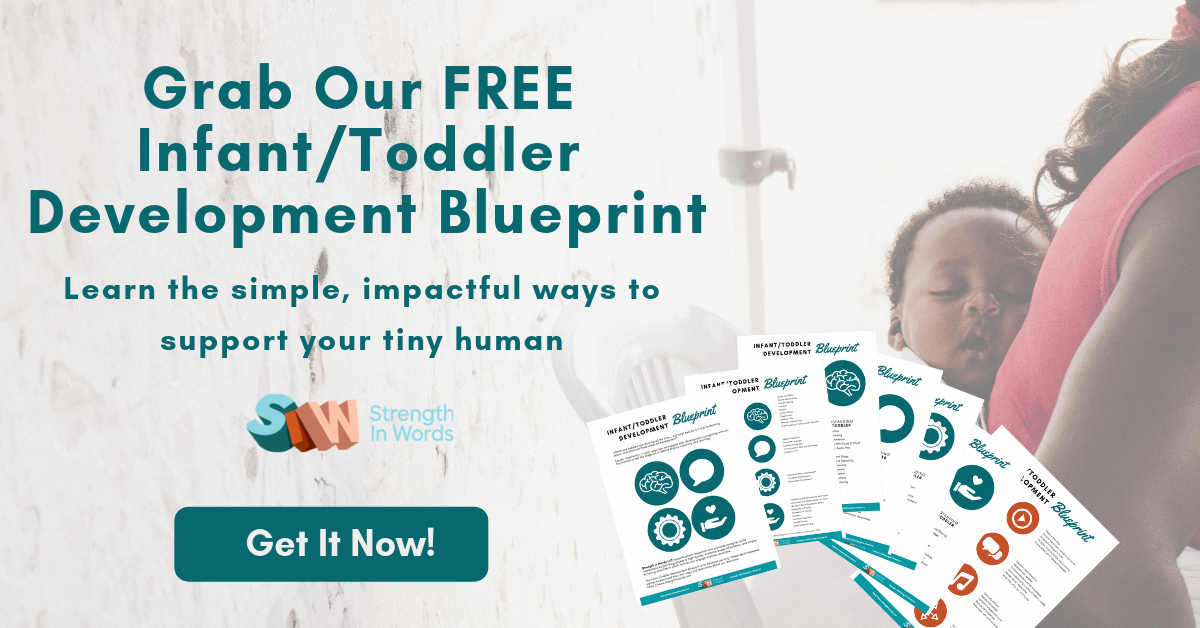Music is a rich framework that can so easily be used to promote all kinds of development.
As a pediatric speech-language pathologist who loves to sing, I’ve done a fair amount of research into the connections between music and early learning…
Especially when it comes to the connections between music education and communication development!
I love encouraging families to make their own DIY instruments, like this rain stick!
As we discussed on our corresponding podcast episode, “Why Sing?,” when we sing, we are modeling so many things – including (but not limited to):
- Vocabulary
- Phrasing patterns or grammatical structures
- Expressions of feelings and thoughts
- Attention and listening skills
- Something called “joint attention,” or the shared attention between you and your baby upon an outside object.

Don't Miss our Corresponding Podcast Episode!

Materials to create your DIY Rain Stick
- Empty (round edges) spice jar that you have saved or purchased (glass or plastic)
- Rice, lentils or other small grain/kernel
- Duct tape or other reliable tape
Instructions to create your DIY Rain Stick
- If you care to, remove any labels by soaking container in hot water and peeling off.
- Pour in your grain/kernel, filling about 1/2 – 3/4 of the way to the top (or experimenting with different levels of fullness for different sounds
- Cover the seal entirely with duct tape to prevent escaping grains/kernels
- For best results, roll on carpeted surface – on wooden or other surfaces, the sound of rolling will overpower the contents. Alternate on various surfaces to highlight the differences!
Ages:
From birth:
- Roll back in forth in Baby’s vicinity – the sound is soft and not too overwhelming
- Place near Baby’s hands or feet to allow wandering fingers and toes to experience early notions of cause and effect
- Baby may roll, pick up, shake – all different ways to make sound with and manipulate this simple instrument!
IF you prefer to simply purchase a rainstick, you can find a few of my favorites below.
This post contains affiliate links. All activities described by Learn With Less assume close supervision of the child by an adult.

